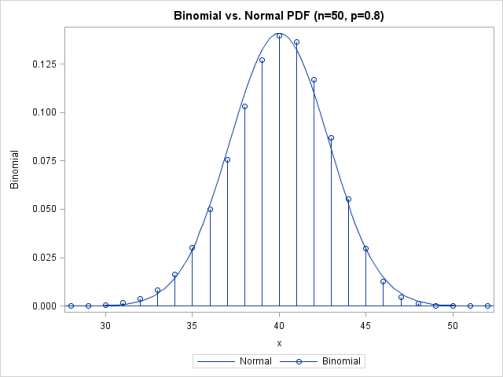
Welcome to the carnival…
Before we begin, let’s know our number-friend of this month. 135 is the smallest three-digit number that is the sum of its first digit and the square of its second digit and the cube of its third digit:  .
.
Now, get hold of pen and paper, the carnival begins…

Cross-Number Puzzle – Numbrcise.com
This is a “medium” brainteaser to help you warm up. To play, you must fill in all the blank squares in the grid with numbers ranging from 1 to 9 in order to find a synchronized solution to a series of horizontal and vertical equations – all at once.
Three dimensional tessellation of crosses – circlesandtriangles (Dan)
Day after tomorrow is 118th birthday of Maurits Cornelis Escher and will be celebrated as first “Tessellation Day” [details]. And in this article, Dan investigates the three dimensional analogue of Greek Cross tessellation using animations. He elegantly explains the mathematics involved behind tessellation by reducing the 3D problem to a 2D one.
Snell and Escher – Joshua Bowman
When we study the concept of refraction, one of the central law is “Snell’s Law”. Motivated by Johann Bernoulli’s (a mathematician) clever application of Snell’s Law to solve brachistochrone problem, Joshua introduces reader to hyperbolic geometry via works of Maurits Cornelis Escher (an artist) using Snell’s Law! I have many times discussed hyperbolic geometry with young minds, but this introduction is really illuminating.
5 Mistakes to Avoid when Drawing a Soccer Ball – David Swart
At some point of time, you must have tried your hand at drawing various objects around you. Moreover, soccer is claimed to be most played sports in the world. But still many of us can’t draw a soccer ball properly! In this lovely article, David helps us to mathematically identify and correct these mistakes…
Boolean Algebra – mathsbyagirl
We all use electronic devices and they will not work without the transistors linked together on a silicon chip. These transistors interact with each other using “on” or “off” state. This interaction can be mathematically modelled using “Boolean Algebra”. In this article, the author has successfully transmitted her passion and excitement for the subject to other people. This article is accessible to anyone curious enough to learn about this subject.
Banach-Tarski Paradox – Austin Lawson
If you try to take a stroll through “mathematical logic”, you will encounter the statements that contradict themselves and yet might be true. Such statements are called paradoxes. In this article, Austin gives a sketch of the Banach-Tarski theorem and paradox. It is intended for mathematicians of intermediate skills though the first few paragraphs are accessible to more people.
Programming is a piece of cake – Paula Rowinska
This is an article discussing the importance of computing in the modern maths, especially the applied areas. There’s a common misconception that mathematicians work only on very pure and useless for the society problems – Paula explains that it’s a myth.
How to assign partial credit on an exam of true-false questions? – Terence Tao
Many of us would have appeared for exams in May, and hence this article by a gifted mathematician becomes oddly relevant! In this article Prof. Terence does a serious analysis of grading system using techniques from Probability and Statistics. In case you happen to be a person associated with academia, this is worth reading.
Float like butterfly and Sting like a Mathematician! – Nira Chamberlain
Muhammed Ali has been regarded as the most influential sportsman of the century. A week ago, he died aged 74. This is intriguing story about how a heavyweight boxing champion influenced Dr. Nira to become a mathematician.
Interview with a mathematician: Maria Chudnovsky – Anthony Bonato
Graph Theory is one of those branches of Mathematics which consist of simple to state but difficult to solve problems. In case you are not familiar with it, just spend some time on this “Math for seven-year-olds” kit. Prof. Anthony interviewed Maria Chudnovsky, a leading mathematician specializing in graph theory. Maria is famous for proving the “Strong Perfect Graph theorem”, which was open for forty years. Maria is engaging and gives great advice to young mathematicians. She also talks about her upbringing, including facts you can’t find on her wiki page or other interviews.
Prime After Prime – Brian Hayes
There’s lots about the prime numbers that seems random; you can even play a good game of dice with them. But in March Robert J. Lemke Oliver and Kannan Soundararajan discovered some remarkable biases or correlations between pairs of consecutive primes. Brain explores this discovery in computer code and “very illuminating” pictures.
Chi-square goodness of fit test example and prime numbers – John Cook
This article builds upon Brian Hayes‘ article about the distribution of primes, which we just discussed. Motivated by the argument that “Primes aren’t random, but sometimes it can be useful to treat them as if they were.”, John writes about the connection between statistics and number theory. Mathematically mature audience will surely enjoy reading this.
Maximal density subsquare-free arrangements – Peter Karpov
I will end this Carnival with an open problem. In this article, Peter discusses some computational results for the “no subsquares problem”. The statement of problem is as follows
What is the largest number of points that can be placed on a N × N grid so that no four of them form a square?
Get your hands dirty and try to find an efficient algorithm to calculate answer for N>16!
But, before we say good bye to this edition of monthly roundup, let me remind you to visit the previous edition which was hosted by Kartik at Comfortably Numbered. Join us next time for the 136th edition, hosted by Manan at Math Misery. You can find all the other Carnivals, and submit articles for future carnivals at: http://aperiodical.com/carnival-of-mathematics/







You must be logged in to post a comment.